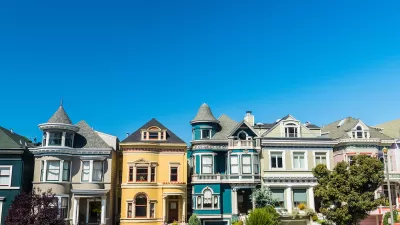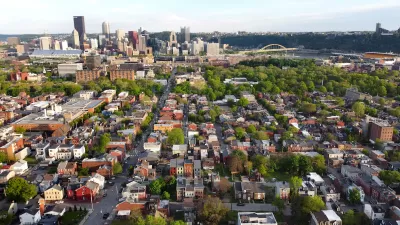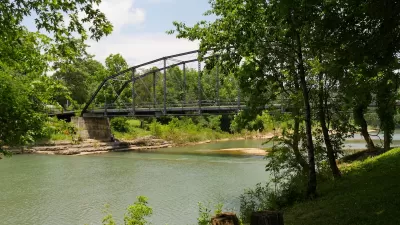It has been a few years since my last trip to Europe, so perhaps I have selective memory. But I don’t recall having to compete with hundreds of cars or choke down exhaust while exploring the streets of London. I remember navigating through seas of people that filled the city’s squares, alleyways and boulevards.
It has been a few years since my last trip to Europe, so perhaps I have selective memory. But I don't recall having to compete with hundreds of cars or choke down exhaust while exploring the streets of London. I remember navigating through seas of people that filled the city's squares, alleyways and boulevards.
Some of the world's most walkable cities, like London, New York and San Francisco, are actually hostile territory for drivers. As a result, people get around on foot, by cab or via mass transit.
Through a positive feedback loop, pedestrians abound in neighborhoods where walking is much more pleasant than driving. Walkable communities tend to limit traffic volume, which creates a more enjoyable, safe and healthy streetscape, which in turn attracts more pedestrians. In autocentric communities, on the other hand, it is usually easiest to just hop in the car.
The Charter of the New Urbanism asserts that "communities should be designed for the pedestrian and transit as well as the car". This is a noble goal, and many new developments in California (both New Urbanist and others) offer rail access and a network of sidewalks. The challenge has been the "as well as the car" clause. In southern California, planners are bending over backwards to accommodate a rapidly increasing number of vehicles. In an effort to keep traffic flowing smoothly, they are building even wider roads and larger parking lots, making things way too easy for drivers. They are by default creating autocentric environments, regardless of the number of sidewalks included. Multi-lane arterials are about as inviting to pedestrians as sidewalk-rimmed freeways.
So, is there a way to "acknowledge the car" without constructing enormous suburban throughways? While reducing car use sounds cliché, planners do need to provide some disincentives for driving. For example, the City of Berkeley provides very limited parking, both downtown and near the University of California campus. After about a week of driving in circles and $40 parking tickets, new residents soon learn that it is much easier to walk, bike or take the bus. Because so many residents use alternate means of transportation, traffic is usually not gridlocked, even though most streets are quite narrow. Berkeley also has a good old-fashioned urban street grid, which serves to diffuse traffic among countless side streets (all of which are walkable, by the way).
One encouraging sign is the "New Alternatives to Arterials" workshop that was held last fall in Boulder, CO, currently featured in an article on the Congress for the New Urbanism home page. The article concedes that these high-speed roadways are entirely inconsistent with pedestrian-friendly streets.

Planetizen Federal Action Tracker
A weekly monitor of how Trump’s orders and actions are impacting planners and planning in America.

Canada vs. Kamala: Whose Liberal Housing Platform Comes Out on Top?
As Canada votes for a new Prime Minister, what can America learn from the leading liberal candidate of its neighbor to the north?

The Five Most-Changed American Cities
A ranking of population change, home values, and jobs highlights the nation’s most dynamic and most stagnant regions.

San Diego Adopts First Mobility Master Plan
The plan provides a comprehensive framework for making San Diego’s transportation network more multimodal, accessible, and sustainable.

Housing, Supportive Service Providers Brace for Federal Cuts
Organizations that provide housing assistance are tightening their purse strings and making plans for maintaining operations if federal funding dries up.

Op-Ed: Why an Effective Passenger Rail Network Needs Government Involvement
An outdated rail network that privileges freight won’t be fixed by privatizing Amtrak.
Urban Design for Planners 1: Software Tools
This six-course series explores essential urban design concepts using open source software and equips planners with the tools they need to participate fully in the urban design process.
Planning for Universal Design
Learn the tools for implementing Universal Design in planning regulations.
New York City School Construction Authority
Village of Glen Ellyn
Central Transportation Planning Staff/Boston Region MPO
Institute for Housing and Urban Development Studies (IHS)
City of Grandview
Harvard GSD Executive Education
Regional Transportation Commission of Southern Nevada
Toledo-Lucas County Plan Commissions





























